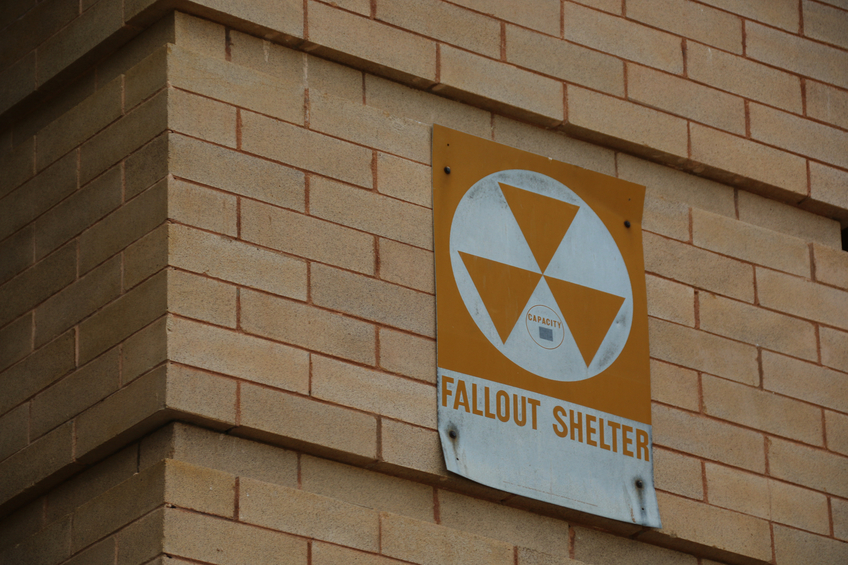Ohio Construction Safety and Ethics 30 PDH Discount Package 3
Respirable Crystalline Silica Standard for Construction (C09-005)
Protecting Yourself and Your Family from Radon (C01-022)
Preventing Mold in the Workplace (C01-014)
Factors to Consider When Using Toxic Release Inventory Data (H01-003)
Building Terrorism Mitigation - Blast and CBR Measures (F04-002)
Protecting Building Environments from Airborne CBR Attacks (F03-003)
Understanding US SNUR and CA SNAC Compliance (H03-011)
Introduction to Radiation (Y03-004)
General Principles of Engineering Ethics (LE2-016)

This online engineering PDH course provides guidance on the Confined Spaces standard that applies to construction work performed in confined spaces. It addresses the most common issues that employers face and provides sufficient detail to serve as a useful compliance guide.
A confined space is a space whose configuration and/or contents may present special dangers not found in normal work areas. Confined spaces may be poorly ventilated and, as a result, contain insufficient oxygen or hazardous levels of toxic gases. Working in a tight space can prevent a worker from keeping a safe distance from mechanical and electrical hazards in the space. Fumes from flammable liquids in a poorly ventilated area can reach explosive levels.
Such hazards endanger both the workers in the confined space and others who become exposed to the hazards when they attempt to rescue injured workers. Therefore, employers must evaluate all confined spaces in which their employees work to determine whether hazards exist and whether the work to be done has the potential to create such hazards in the future.
This 3 PDH online course is applicable to engineers, architects, managers and contractors whose duties involve work in confined spaces and are interested in learning about the proper approach to safety while working in compliance with the Confined Spaces standard.
This PE continuing education course is intended to provide you with the following specific knowledge and skills:
- Familiarizing with confined and permit spaces
- Gaining a general overview of the Confined Spaces standard’s requirements
- Learning about employer responsibilities and worker training
- Understanding the content of the permit space program
- Learning about the alternate procedures for certain permit spaces
- Understanding the responsibilities of entrants, attendants and entry supervisors
- Exploring different rescue and emergency services
Upon successful completion of the quiz, print your Certificate of Completion instantly. (Note: if you are paying by check or money order, you will be able to print it after we receive your payment.) For your convenience, we will also email it to you. Please note that you can log in to your account at any time to access and print your Certificate of Completion.

This online engineering PDH course provides an overview of the Occupational Safety and Health Administration’s (OSHA) Respirable Crystalline Silica Standard for Construction.
Crystalline silica is a common mineral found in many naturally occurring and man-made materials used at construction sites. Materials like sand, concrete, brick, block, stone and mortar contain crystalline silica. Amorphous silica, such as silica gel, is not crystalline silica. Respirable crystalline silica – very small particles typically at least 100 times smaller than ordinary sand found on beaches or playgrounds – is generated by high-energy operations like cutting, sawing, grinding, drilling and crushing stone, rock, concrete, brick, block and mortar, or when abrasive blasting with sand.
Construction workers exposed to respirable crystalline silica are at increased risk of developing serious adverse health effects including silicosis, lung cancer, chronic obstructive pulmonary disease, and kidney disease. This course describes the steps that employers are required to take to protect employees in construction from the hazards associated with exposure to respirable crystalline silica. This course provides guidance only, and does not alter or determine compliance responsibilities, which are laid out in OSHA standards and the Occupational Safety and Health Act.
This 9 PDH online course is intended for safety and health engineers, construction workers and others looking to better understand OSHA’s Respirable Crystalline Silica standard for construction.
This PE continuing education course is intended to provide you with the following specific knowledge and skills:
- Gaining general information about respirable crystalline silica
- Familiarizing with the scope and definition of the standard
- Learning about the specified exposure control methods and the alternative exposure control methods
- Understanding several sections of the standard such as: respiratory protection, housekeeping, written exposure control plan, medical surveillance, communication of hazards, and recordkeeping
Upon successful completion of the quiz, print your Certificate of Completion instantly. (Note: if you are paying by check or money order, you will be able to print it after we receive your payment.) For your convenience, we will also email it to you. Please note that you can log in to your account at any time to access and print your Certificate of Completion.

This online engineering PDH course provides guidelines on how to protect yourself and your family from Radon.
Radon is estimated to cause many thousands of deaths each year. That’s because when you breathe air containing radon, you can get lung cancer. Radon is a gas that cannot be seen, smelled, or tasted. Testing kits are required in order to determine whether radon exposure is a problem in your home.
This 1 PDH online course is applicable to environmental, civil, and mechanical engineers as well as other personnel who are interested in gaining a better understanding of radon.
This PE continuing education course is intended to provide you with the following specific knowledge and skills:
- Understanding how radon gets into your home
- Familiarizing with the risks of elevated radon levels in your home
- Learning how to test for radon
- Learning how to reduce radon levels in the home
- Dispelling myths about radon exposure and reduction
Upon successful completion of the quiz, print your Certificate of Completion instantly. (Note: if you are paying by check or money order, you will be able to print it after we receive your payment.) For your convenience, we will also email it to you. Please note that you can log in to your account at any time to access and print your Certificate of Completion.

This online engineering PDH course provides basic information about mold, mold sources, and building-related illnesses. Brief discussions are included on building design considerations for healthy indoor air, as well as building evaluation and sampling for mold.
Molds are the most common forms of fungi found on the earth; they reproduce through the formation of spores, tiny microscopic cells that float through the indoor and outdoor air on a continual basis. Therefore left unchecked, they can eventually destroy the surfaces they grow on.
This 1 PDH online course is applicable to engineers, construction personnel, design professionals, building owners and other personnel either dealing with mold or interseted in understanding how to prevent building-related illnesses associated with mold problems in offices and other indoor workplaces.
This PE continuing education course is intended to provide you with the following specific knowledge and skills:
- Understanding the definition of mold
- Knowing what causes mold in buildings
- Learning how to prevent mold in buildings
- Understanding the health effects associated with mold
- Learning about mold sampling
- Knowing what to do about mold in the workplace
In this professional engineering CEU course, you need to review OSHA 3304-04N, "Preventing Mold-Related Problems in the Indoor Workplace".
Upon successful completion of the quiz, print your Certificate of Completion instantly. (Note: if you are paying by check or money order, you will be able to print it after we receive your payment.) For your convenience, we will also email it to you. Please note that you can log in to your account at any time to access and print your Certificate of Completion.

This online engineering PDH course provides a comprehensive overview of the Toxics Release Inventory (TRI) data, focusing on its significance, application, and the critical factors to consider when analyzing this data.
This course highlights the role of the Environmental Protection Agency (EPA) in compiling and disseminating TRI data, which encompasses information about toxic chemicals managed by various facilities in the United States. It explores the data collection processes, the types of chemicals reported, and the regulatory framework governing these releases. This course delves into key factors that impact the interpretation of TRI data, such as the toxicity of chemicals, the routes of exposure, and the context of environmental regulations. It explores methodologies for analyzing releases, understanding waste management practices, and assessing potential risks associated with toxic chemicals in communities. By engaging with real-world examples and case studies, the course shows how TRI data can inform industry practices, regulatory measures, and public health considerations.
This 1 PDH online course is applicable to chemical and environmental engineers, as well as other technical professionals interested in learning more about factors to consider when using toxic release inventory data.
This PE continuing education course is intended to provide you with the following specific knowledge and skills:
- Understanding the purpose and significance of the Toxics Release Inventory (TRI) and its role in environmental protection and public health
- Learning how to analyze TRI data, including methodologies for interpreting toxic chemical releases and waste management practices
- Knowing the key factors that influence exposure and risk assessments related to toxic chemicals reported in TRI
- Familiarizing with the regulatory framework governing TRI reporting and the compliance requirements for facilities handling toxic substances
- Understanding the concept of source reduction and its importance in minimizing toxic releases in industrial operations
- Learning about the various tools and resources available for accessing and utilizing TRI data effectively in stakeholder decision-making
- Knowing how to evaluate industrial practices and community impacts associated with TRI-reported chemicals to inform public health initiatives
- Familiarizing with best practices for engaging with communities concerning TRI data and potential environmental concerns related to toxic releases
In this professional engineering CEU course, you need to review the course document titled, “Factors to Consider When Using Toxic Release Inventory Data”, which is based on the U.S. Environmental Protection Agency (EPA), Publication No. 260R19001, “Factors to Consider When Using Toxic Release Inventory Data”.
Upon successful completion of the quiz, print your Certificate of Completion instantly. (Note: if you are paying by check or money order, you will be able to print it after we receive your payment.) For your convenience, we will also email it to you. Please note that you can log in to your account at any time to access and print your Certificate of Completion.

This online engineering PDH course provides guidance on the various explosive blast mitigation measures as well as chemical, biological and radiological (CBR) protective measures. It discusses explosion effects, building damage, injuries, levels of protection, stand-off distance, and predicting blast loads and effects. It also presents protective measures and actions to safeguard the occupants of a building from CBR threats based on guidance from the CDC/NIOSH and the DOD. These measures include evacuation, sheltering in place, personal protective equipment, air filtration and pressurization, and exhausting and purging, as well as CBR detection.
This 4 PDH online course is applicable to engineers, planners, architects, landscape designers, construction and operations personnel, security and law enforcement agents, as well as consultants and contractors to gain a better understanding in identifying and implementing explosive blast and CBR protective measures against potential terrorist attacks.
This PE continuing education course is intended to provide you with the following specific knowledge and skills:
- Understanding the blast process and effects (chemical reaction, blast shockwave, incident and reflected pressures, building damage and injuries)
- Estimating the minimum standoff distance based on a given design threat
- Predicting blast loads and effects
- Implementing various design protective measures for CBR mitigation
In this professional engineering CEU course, you need to review Chapter 4 “Explosive Blast” and Chapter 5 “Chemical, Biological, and Radiological Measures” of the FEMA Publication tilted, “Mitigating Potential Terrorist Attacks Against Buildings” (FEMA 426).
Upon successful completion of the quiz, print your Certificate of Completion instantly. (Note: if you are paying by check or money order, you will be able to print it after we receive your payment.) For your convenience, we will also email it to you. Please note that you can log in to your account at any time to access and print your Certificate of Completion.

This online engineering PDH course provides guidance on such protective measures that a building owner, manager or engineer can implement without undue delay to enhance occupant protection from an airborne chemical, biological, or radiological (CBR) attack.
The likelihood of a specific building being targeted for terrorist activity is generally difficult to predict. As such, there is no specific formula that will determine a certain building's level of risk. Building owners, managers or engineers must make their own decisions about how to reduce their building's risk to airborne chemical, biological, or radiological (CBR) attack.
These decisions may be aided by a comprehensive building security assessment to identify the appropriate protective measures which will help transform buildings into less attractive targets. These protective measures include, but are not limited to, increasing the difficulty of introducing a CBR agent, increasing the ability to detect terrorists before they carry out an intended release, and incorporating plans and procedures to mitigate the effects of a CBR release.
This 3 PDH online course is applicable to building owners, facility engineers and managers, and maintenance personnel of public, private, and governmental buildings, including offices, laboratories, hospitals, retail facilities, schools, transportation terminals, and public venues (for example, sports arenas, malls, coliseums), who are interested in gaining a better understanding of enhancing the resilience of a building.
This PE continuing education course is intended to provide you with the following specific knowledge and skills:
- Understanding buildings and their systems
- Identifying physical security requirements
- Evaluating HVAC systems and their vulnerability to CBR agents
- Implementing maintenance, administration and training measures
In this professional engineering CEU course, you need to review the course document titled "Protecting Building Environments from Airborne Chemical, Biological or Radiological Attacks" prepared by the National Institute for Occupational Safety and Health (NIOSH), Department of Health and Human Services, May 2002.
Upon successful completion of the quiz, print your Certificate of Completion instantly. (Note: if you are paying by check or money order, you will be able to print it after we receive your payment.) For your convenience, we will also email it to you. Please note that you can log in to your account at any time to access and print your Certificate of Completion.

This online engineering PDH course provides an overview of the U.S. Significant New Use Rule (SNUR) and Canadian Significant New Activity (SNAc) provisions.
This course covers vital knowledge of compliance requirements under the Toxic Substances Control Act (TSCA) and the Canadian Environmental Protection Act (CEPA), to enhance the understanding of chemical safety regulations. This course explores key topics, including the classification of chemicals, notification processes, and obligations for manufacturers and processors. It provides real-world scenarios to better understand the implications of these regulations and how to ensure compliance.
This 3 PDH online course is applicable to environmental engineers, chemical safety personnel, as well as other professionals looking to navigate chemical regulations effectively and promote safer environmental practices in their organizations.
This PE continuing education course is intended to provide you with the following specific knowledge and skills:
- Understanding the key concepts and frameworks of the U.S. Significant New Use Rule (SNUR) and Canadian Significant New Activity (SNAc) provisions
- Learning the classification of chemical substances under the Toxic Substances Control Act (TSCA) and the Canadian Environmental Protection Act (CEPA)
- Knowing the notification processes required for new and existing chemicals and the associated compliance obligations
- Familiarizing yourself with real-world scenarios and examples that illustrate the application of SNUR and SNAc regulations
- Understanding the differences between SNURs and SNAcs, including their implications for chemical management practices
- Learning how to effectively navigate regulatory requirements to promote safer environmental practices in your organization.
Upon successful completion of the quiz, print your Certificate of Completion instantly. (Note: if you are paying by check or money order, you will be able to print it after we receive your payment.) For your convenience, we will also email it to you. Please note that you can log in to your account at any time to access and print your Certificate of Completion.

This online engineering PDH course provides an overview of the types of radiation, the health effects due to exposure and the way it is regulated.
Radiation has always been present and is all around us. Life has evolved in a world containing significant levels of ionizing radiation. We are also exposed to man-made radiation from sources such as medical treatments and activities involving radioactive material.
The health effects of radiation are well understood. Since the early 20th century, radiation’s effects have been studied in depth, in both the laboratory and among human populations. Because of the known health risks of radiation, it must be carefully used and strictly controlled. A balance must be struck between radiation’s societal benefits and the risks that radiation poses to people, health and the environment.
The Canadian Nuclear Safety Commission (CNSC) regulates the use of nuclear energy and materials to protect the health, safety and security of Canadians and the environment; and to implement Canada's international commitments on the peaceful use of nuclear energy. It also sets dose limits to prevent workers and the public from excessive radiation exposure.
This 3 PDH online course is applicable to safety engineers and professionals who are interested in learning more about nuclear safety.
This PE continuing education course is intended to provide you with the following specific knowledge and skills:
- Understanding the definitions of atoms, isotopes and radioisotopes
- Familiarizing with the types of radiation: non-ionizing and ionizing radiation
- Knowing the natural and man-made sources of ionizing radiation
- Understanding the health effects of radiation exposure and how it causes cancer
- Familiarizing with the epidemiological evidence of the effect of the radiation exposure
- Identifying the radiation dose limits and the typical radiation doses produced by natural and man-made sources
- Learning the types of radiation doses: absorbed, equivalent and effective dose
- Familiarizing with the rules regulating radiation
Upon successful completion of the quiz, print your Certificate of Completion instantly. (Note: if you are paying by check or money order, you will be able to print it after we receive your payment.) For your convenience, we will also email it to you. Please note that you can log in to your account at any time to access and print your Certificate of Completion.

This online engineering PDH course presents the principles of engineering ethics that every engineer is expected to live by when practicing their profession.
Engineering ethics is (1) the study of moral issues and decisions confronting individuals and organizations involved in engineering and (2) the study of related questions about moral conduct, character, ideals and relationships of peoples and organizations involved in technological development (Martin and Schinzinger, Ethics in Engineering).
This course describes the fundamental legal concepts with which very engineer should be familiar. It also presents unique disciplinary case studies selected from across the nation, as well as hypothetical ethical challenges that demonstrate how difficult it can be to apply the code of ethics for engineers.
This 2 PDH online course is applicable to all professional engineers who are either required to fulfill 2 PDH in engineering ethics or are interested in broadening their understanding of what it means to practice and uphold the honor and integrity of their engineering profession while holding the utmost safety, health, and welfare of the public.
This PE continuing education course is intended to provide you with the following specific knowledge and skills:
- Understanding the common definition of ethics regarding engineering
- Learning about the important principles of the engineer’s professional responsibility
- Learning the do’s and don’ts through several ethical and disciplinary cases
- Understanding what it means to practise and uphold the honor and integrity of the engineering profession
Upon successful completion of the quiz, print your Certificate of Completion instantly. (Note: if you are paying by check or money order, you will be able to print it after we receive your payment.) For your convenience, we will also email it to you. Please note that you can log in to your account at any time to access and print your Certificate of Completion.